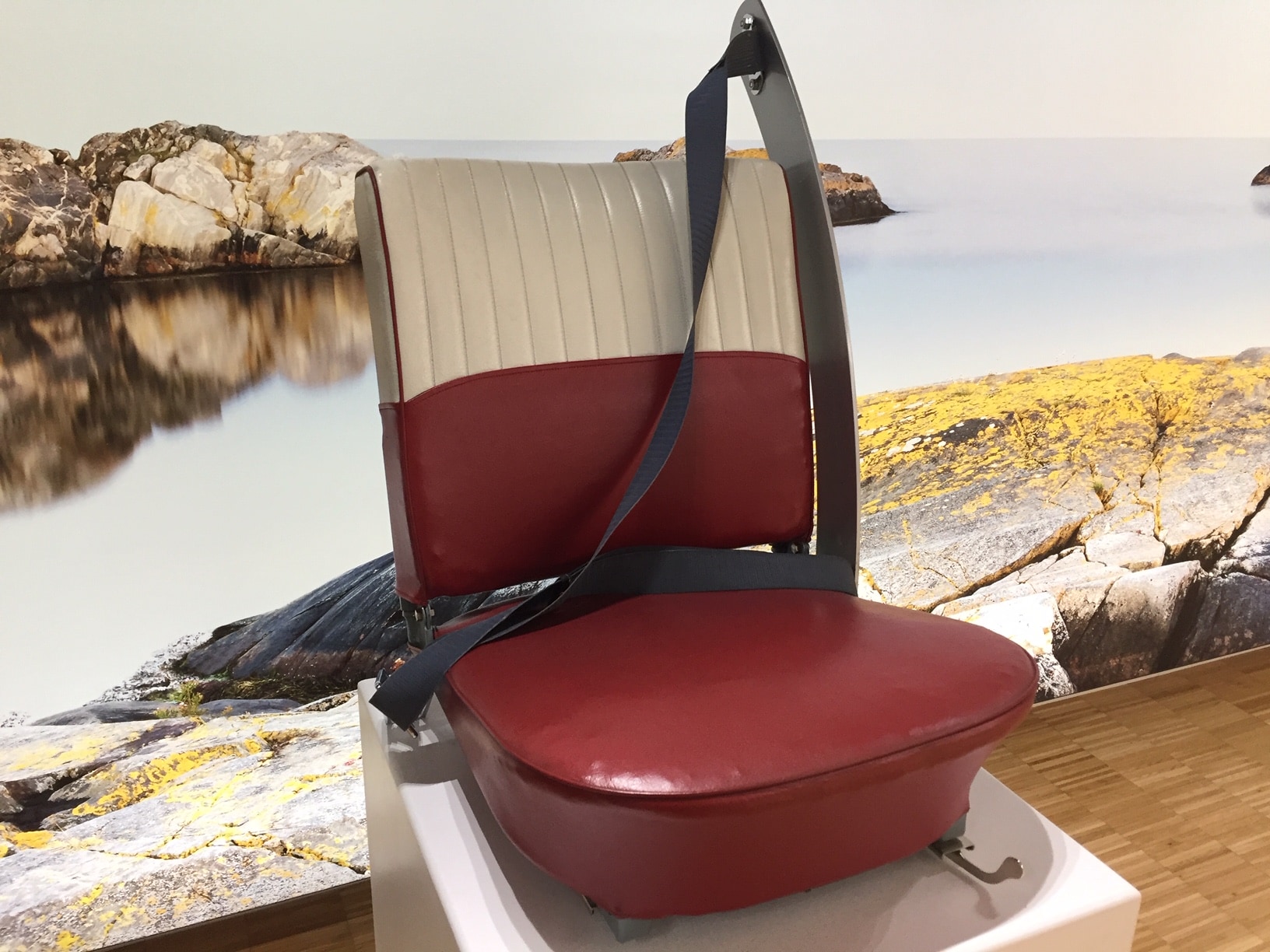
Volvo Cars is for the first
time making its safety knowledge easily accessible in a central digital
library, which it urges the car industry to use, in the interest of
safer roads for all.
The announcement symbolizes the
company’s philosophy of boosting safety through sharing knowledge that
helps save lives and comes on the sixty-year anniversary of what may
have been the most important invention in the history of automotive
safety - the three-point safety belt.

During a recent trip to Volvo Cars headquarters, in Rockleigh, NJ, I had the opportunity to see a display featuring the first 3-point safety belt. Introduced to Nordic markets in 1959, on the Amazon (120) and PV544, the three-point safety belt is estimated to have saved over one million lives globally, not just in Volvos but in numerous other cars, thanks to their decision to share the invention in the interest of improving traffic safety. Since then it has continued to prioritize societal progress over financial gain alone. By 1963, all Volvo cars leaving the factory were fitted with 3-point safety belts in the front seats, and by 1967, they were fitted to the rear seats as well.
To celebrate this milestone and to
underline that its sharing tradition goes beyond patents and physical
products, Volvo Cars now launches the E.V.A. Initiative. The initiative
embodies and celebrates sixty years worth of sharing research into car
safety with the world, but also highlights a fundamental issue with
inequality in terms of car safety development.
“We have data on tens of thousands
of real-life accidents, to help ensure our cars are as safe as they can
be for what happens in real traffic,” says Lotta Jakobsson, professor
and senior technical specialist at Volvo Cars Safety Center. “This
means our cars are developed with the aim to protect all people,
regardless of gender, height, shape or weight, beyond the ‘average
person’ represented by crash test dummies.”
The E.V.A. Initiative illustrates,
based on Volvo Cars’ own research data as well as several other
studies, that women are more at risk for some injuries in a car crash.
For example, differences in anatomy and neck strength between the
average man and woman mean that women are more likely to suffer from
whiplash injuries.
Based on those studies and its own
crash data, Volvo Cars created virtual crash test dummies to better
understand these accidents and develop safety technologies that helps
to protect both men and women in an equal way. The first resulting
technology was WHIPS whiplash protection introduced in 1998 that has
contributed to the unique look of Volvo’s seats and head restraints.
The idea of prioritizing societal
progress still drives Volvo Cars’ safety development work. It develops
new technology not to only meet safety standards or pass regulatory
tests, but because its own research data, based on a close analysis of
tens of thousands of real-life accidents, show where safety can be
improved.
In the 1980s, Volvo Cars started to
focus on side impacts, after its data showed that too many people were
injured in such accidents due to the short distance between impact and
occupant. This resulted in several innovations starting in the 1990s,
such as the side impact protection system (SIPS), side airbags and
inflatable curtains. All these innovations, based on Volvo’s research
data, now form an industry standard.
More recently, Volvo Cars’ research
data showed an issue with lumbar spine, or lower back, injuries across
all people, regardless of gender and size. Further analysis and study
made Volvo focus on the dangers of run-off road injuries. The resulting
technology, introduced first on the XC90 and now on all SPA-based cars,
is an energy absorber in the seats that goes far beyond what is a
regulatory requirement for car makers.